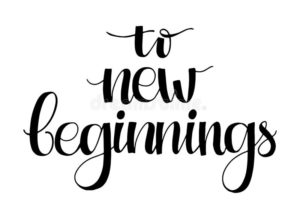Starting the New Year on the Right Foot

With every new year comes a new beginning. Taking what you learned in the previous year and building from it is key to having an even more prosperous year to come. Here are what we see as the five most important elements to getting your digital communications plan started on the best track.
1. Get organized, stay organized
Yes, this is basically everyone’s new year’s resolution, whether it’s work or play. As you look to see how you can stay on track with your digital communications plan, first take a look at how you spend your workday. How much time you are spending on work tasks? And how much time gets taken away because of distractions?
Create priority lists to help you stay organized for essential daily, weekly, and monthly tasks. Find areas in your day where you can cut down on multitasking, and manage your workload by scheduling one task at a time. It will also help to reduce the clutter in your workspace; rid your view of things you don’t need anymore, clean up your inbox, and create new folders on your drive for all things 2020. Small tasks that have a big impact on how you face a busy year ahead.
2. Make regular time for your data
Data is both our rock for making decisions and the thorn in our side when it comes to analyzing it. This year, start off by showing your data some love and make a regular date with your data. The aim is not that it becomes a time-consuming task, but something that you are so in-tune with that you’re able to pivot and develop new ideas easily.
Collect your goals and tactics for the year, and begin to map out your Key Performance Indicators (KPIs) for each. If you’ve done this already, share it with a second set of eyes to be sure you’re tracking the right things. From here, understand how you can pull these data points from your various analytics platform tools (web analytics, social analytics, audience surveys, internal stakeholder feedback, etc.). Data benchmarks are helpful to create valuable content, help you set purposeful targets, gain insights into industry trends, and allow you to see how you’re doing compared to similar organizations.
3. Keep your goals front and center
Once the ball starts rolling, it’s easy to immerse yourself in the tactical side of things, which can sometimes leave the goals of each tactic behind. Why are we publishing this many blogs per week? Why are we launching audience surveys? While you set them out in advance, don’t forget to keep your top-level goals linked to everything you do.
Include your goals and aligning KPIs within each tactical item plan. For example, add columns to label each alongside each item in your editorial and events calendars to remind yourself why you are doing these things. This will act as a reminder to you to craft content that aims for impact and measures how well you are engaging your audiences and fulfilling organizational mission, goals, and values.
4. Connect with your audiences
It’s not news that knowing your audience helps you gain efficiencies in all parts of your organization. The key is to know your audience and what they care about so that your message resonates with them. You are more successful when you pay attention to what your audience wants and needs — and develop great resources for them to get the answers they seek.
Conduct audience research to understand what motivates your audiences and what could possibly stop them from taking action. Then, build tailored messages and define how you will communicate to them across each/all of your platforms. Finally, create clear avenues for users to contribute to your mission by developing multiple navigation paths and calls-to-action that map to your goals and audience needs.
5. Collect and create impact stories
Knowing exactly what you are trying to achieve and being able to reliably measure your performance against these goals is of utmost importance, but it’s also crucial to collect and communicate the impact you are making to your audiences, internal stakeholders, funders, and supporters.
Don’t just focus on the sum of your activities. Look at the data that’s coming out of your tactical plan and make the connections between it and the communities and issues your organization is working hard to support. This is often one of the biggest challenges for organizations as framing and communicating impact is harder than it looks. Beyond data, this is where speaking to audiences directly can result in both inspiration and feedback you weren’t necessarily focused on.
Above all, take a deep breath and tackle things realistically. As digital communications professionals, we have endless lists of tactics, ideas, data, and feedback to sift through. Stay on target to what you’ve committed to at the highest level, and that will be your North Star. Happy 2020 – you’re going to do great things, we know it!




